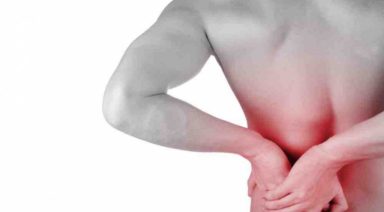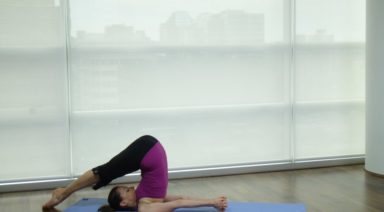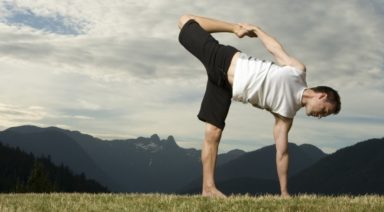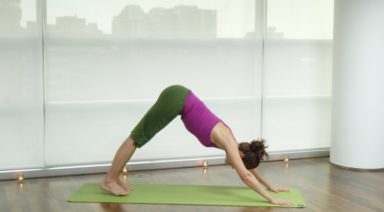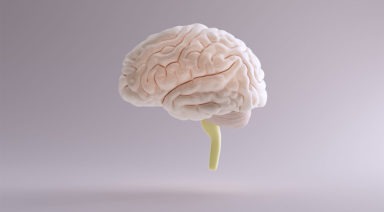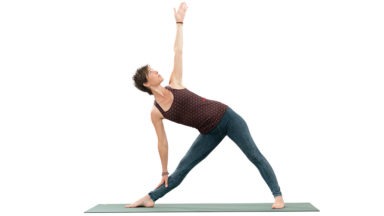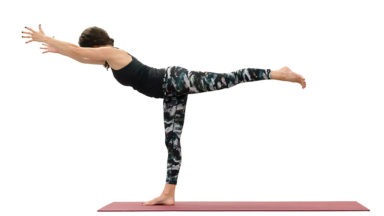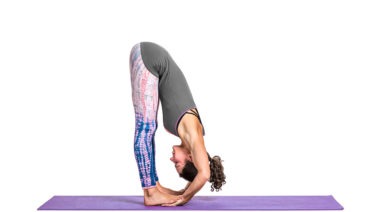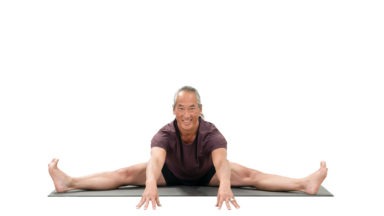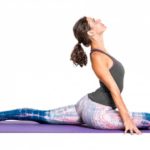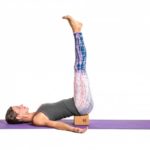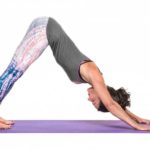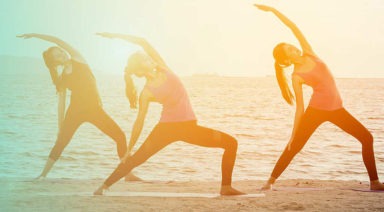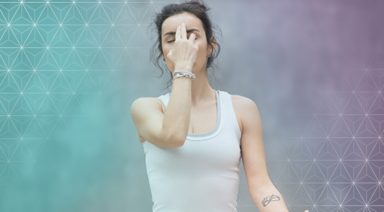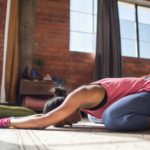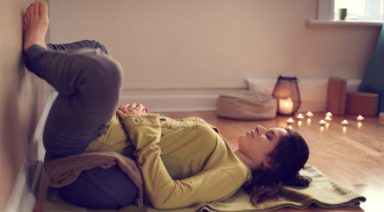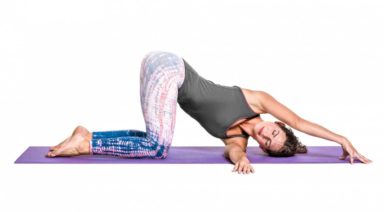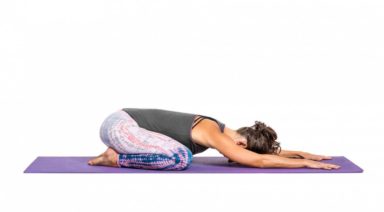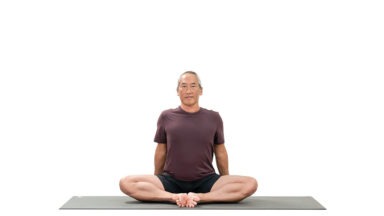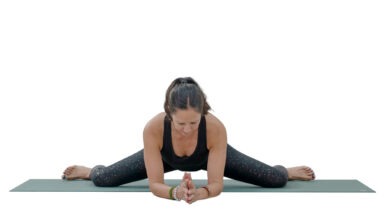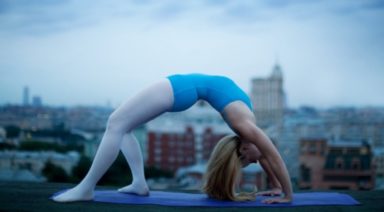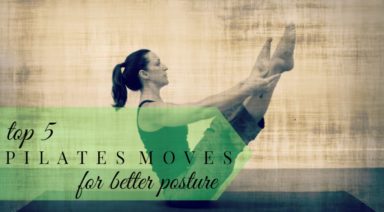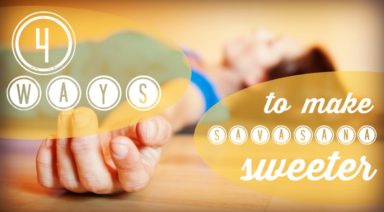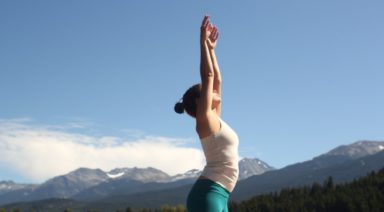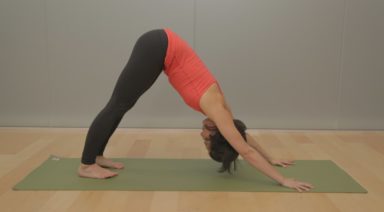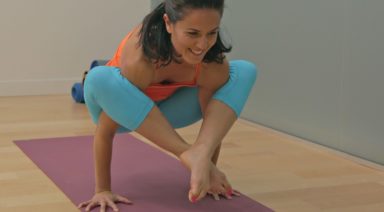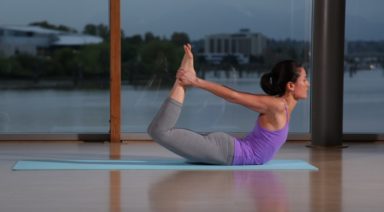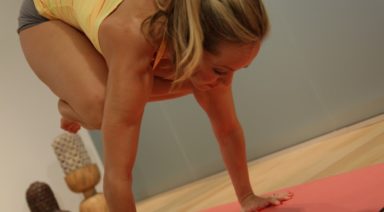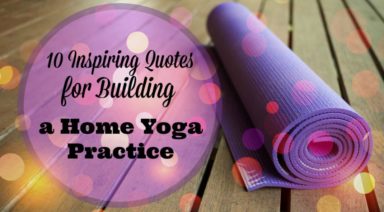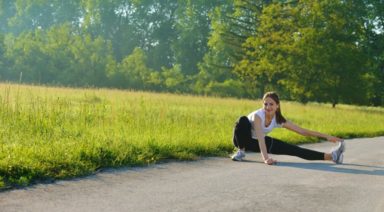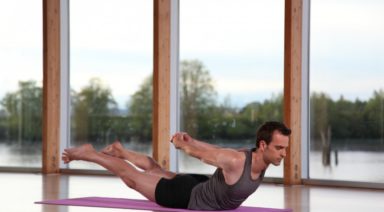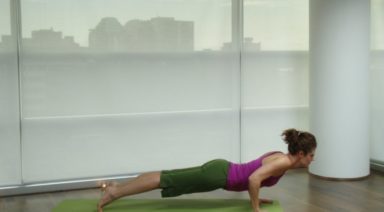What Really Happens in Hip Openers
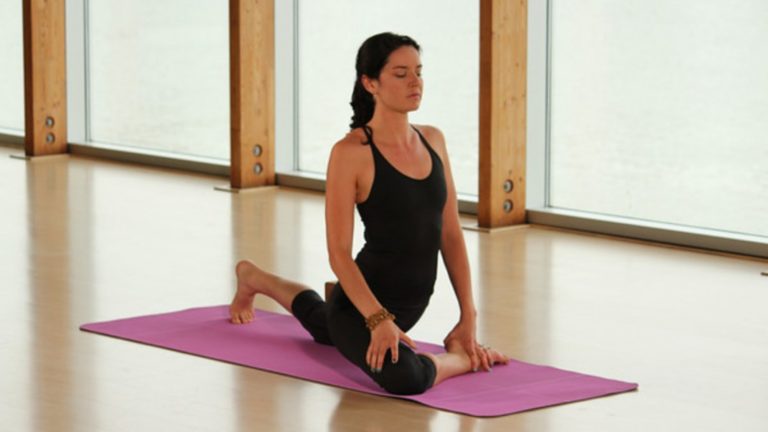
One of the most common requests heard in a yoga class is hip openers today please. This request is usually followed by the other half of the class groaning. We love to hate hip openers yet our bodies crave them and often feel lighter and more open after — for good reason. The majority of us sit for most of our days, shortening the hip flexors at the front of the hip (psoas, rectus femoris, sartorius) and tightening the hip rotators (piriformis, obturator internus, gamellus, to name a few).
A Look Inside the Hip
The hip joint itself is a ball and socket type joint with the head of the femur (thigh bone) sitting in the acetabulum or socket of the pelvis. A variety of muscles attach into the femur starting from the pelvis itself, the lumbar spine, the sacrum, or other parts of the femur. Hip openers could affect any of the muscles surrounding the hip depending on the position of the joint at the time of the pose.
In general when we stretch or open a muscle we are lengthening its position, moving the two attachment points away from each other. This is easy to assess with linear muscles like the psoas which attaches from the front of the lumbar spine, crosses through the pelvis and attaches to the head of the femur. If we flex the hip forward we are shortening the psoas, bringing the two attachments of the muscle closer together. If we extend the hip backwards (such as in the back leg of Pigeon pose we are opening and lengthening the psoas. The effect becomes greater in King Pigeon pose if we assume an upright posture with our spine so that we lengthen the upper attachment more. In this example we can also rethink our definition of hip openers. Suddenly, poses with a bent knee where we rotate the hip are not the only way to open our hips. If the psoas attaches into the femur, and a shortened psoas tightens our hip (not to mention the affect it has on our low back) then poses like Warrior / Virabhadrasana or Half Moon / Ardha Chandrasana become hip openers too.
Rotate to Open a Rotator
The rule of how to open a muscle becomes less clear with the hip rotators where the angle of the joint actually affects the action of the muscle. For example, the piriformis muscle attaches from the front of the sacrum to the back of the femur. It acts as an external or outward rotator of the hip. Except if the hip is flexed, then it assists in abduction or sideways movement of the hip. So to follow the rule of opening we would want to internally rotate the femur, flex the hip and adduct or bring the femur towards midline. This can be achieved with the top leg in Marichyasana (sit with your left leg extended, bend your right knee and step the foot across your left thigh so that the femur is flexed, adducted toward midline, and gently internally rotated.) Other hip openers don’t seem to follow the rule of opening. We often externally rotate the hip to stretch the external rotators of the hip. Huh? The reason this works is because we typically flex the hip at the same time.
Use Your X-Ray Vision
To understand how hip openers work we have to picture the position of the muscle. Let’s picture the obturator internus muscle, a close friend of piriformis. It attaches from our sitting bone or ischial tuberosity to the greater trochanter of the femur, a bony outcropping on the side of the hip. We can feel both of these pieces of bony anatomy. Our ischial tuberosities can be felt when sitting, they are the bony bits under the flesh of our buttocks. Our greater trochanter can be felt by first finding the top of our pelvis by by placing our hands at our waist, firmly pressing in and down until we feel a ledge. This is our iliac crest. Slide your hands down and with your thumb you will feel a bony prominence that is the femur. You can feel it move by slowing rotating the hip in and out. So now we can feel the attachment points for the obturator internus, between the ischial tuberosity or sitting bone, and our femur. From this observation we can see that in a neutral position the muscle wraps around the hip. So if were to flex the hip, the ischial tuberosity scoops under thus increasing the space between the two attachment points and increasing the wrapping distance of the muscle – hence lengthening the muscle. This is why a simple squat (using the term simple lightly) can stretch our hip rotators and can be one of the reasons Westerners find it so challenging to achieve.
Opening Our Hips to Open to Possibility
Since there are many muscles in the hip with many functions depending on the demands we place on our body, keeping these muscles supple can help us in ways that may not seem obvious at first. Hip openers may help us attain a standing pose we’ve been struggling with, or they may help us get down on the ground easily to play with our kids or our kitten. Traditional yogic thought attributes many healing properties to hip openers from organ issues to sexual dysfunction. So if you are one of the groaners when hip openers are suggested, perhaps pause to wonder if they could be helping you in ways you weren’t even aware.
Poor Posture and Pressure on your Spine
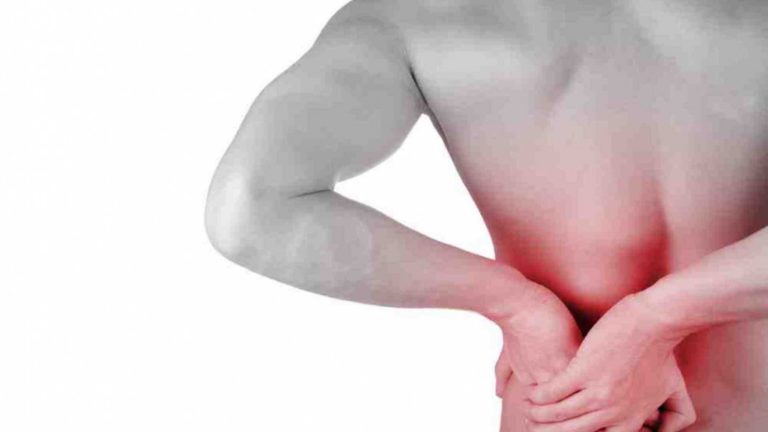
Freddie Mercury was right: we’re under pressure. Nothing can be truer when it comes to your spine. It’s because of simple physics: the pressure or load on your back increases as you move away from a neutral posture. Here are the numbers: Standing straight puts 100mm of pressure on the intervertebral discs of your spine; add a forward bend while flexing or rounding your back and you’ve more than double the pressure, or 220mm. Can you see now why reaching your toes in Uttanasana or any standing forward bend before you’re ready isn’t worth the potential harm to your back?
What poor posture means to the ongoing health of your back?
Over time, poor posture causes the discs between the vertebrae to wear down and lose their ability to cushion and act as shock absorbers. The discs are pushed out towards the back from their normal position which causes bulging or herniated discs. These bulging and worn out discs can cause a more serious problem by increasing the pressure on the spinal nerves and the spinal cord itself. The result is pain in the legs, including sciatica, arms, shoulders, and neck, and problems with muscle innervations, movement patterns and the sensation of temperature, pressure and pain.
These same problems can be worsened when sitting, believe it or not. Sitting, in contrast to standing, actually increases the intradiscal load compared to standing; spinal pressure “sits’ around 140mm pressure. If you slouch (I’m talking to you desk slouchers!), spinal pressure increases to 190mm; add some weight and you’ve put a whopping 275 pounds of pressure on your spine. This is why in certain methods of yoga like Iyengar students learn standing poses before sitting ones as a general rule as they’re considered more advanced.
Sitting for long periods of time can definitely cause back pain or worsen an existing back problem. Sitting is a static posture that increases stress on the entire back, shoulders, arms, and legs, and especially the muscles of the spine. Slouching overstretches spinal ligaments and surrounding structures of the spine and nerves, blood supply is interrupted and the back muscles are overstretched.
The Solution
If you’re not a yogi yet but find yourself slouching or sitting for long periods of time during the day, your yoga can be as simple as doing the following:
-
Getting up periodically to stand up and take the pressure off your spine
-
Sit back into your chair so your back is supported. In yoga postures, ground evenly into your support and allow your spine to straighten up
-
Use a lumbar roll between your lumbar or lower back and your chair. To judge the proper size of the roll, sit back in your chair, place your forearm behind your lower back between it and your chair and lean back. Your forearm is approximately the size of a lumbar roll. This works when driving too.
-
Move! Joints don’t have much blood flow. Joints get nutrition in and waste out by physical movement. Move freely in your chair instead of sitting still for hours at a time.
For you yogis, body awareness is key to minimizing the pressure on your back. I’m not saying never practice a forward bend or a seated pose but rather know how to practice them safely. Even a seemingly friendly pose like Savasana can do harm. Sure, while lying down you’re at the lowest end of the spinal load spectrum at 25mm. As a teacher, I ask my students to roll to the side before sitting up not simply to avoid feeling dizzy and lightheaded but also to reduce the pressures on the spine. For the record, resting on your side applies 75mm pressure on your back, which is quite a bit less than pulling yourself straight up from lying flat on your back.
So, the take home message is: do the work in other poses which don’t load the spine first to lengthen your leg muscles and hamstrings, and strengthen your back before you throw yourself into a forward bend. Realize which types of poses are right for you. Gentle flexion of the spine isn’t for everybody and that’s ok. Once your body is ready, you’ll be reaping the benefits of practicing Uttanasana instead of causing harm to our back.



